When it comes to diamonds, we often associate them with high prices. And it’s true, diamonds can be quite expensive in various forms. However, does the hefty price tag of a diamond translate into a good investment opportunity? Is buying a diamond a wise financial decision? Stay with us as we delve into this topic; you might find the answer to be surprising.
We have an extensive discussion ahead, so be sure to continue reading!
DESIGN YOUR OWN ENGAGEMENT RING: START WITH A SETTING OR START WITH A DIAMOND. IT’S REALLY UP TO YOU!
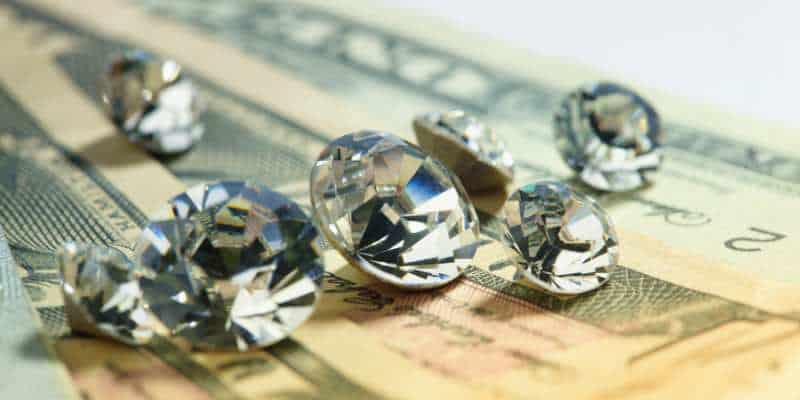
What Makes A Good Investment?
Before we delve into whether diamonds make a good investment, it’s important to understand the fundamental characteristics of a sound investment, regardless of the asset class—whether it’s diamonds, precious metals, or something else entirely.
Investing can take many forms, but the ultimate goal remains consistent: generating income and returns. However, how can we determine if an investment will be profitable and yield more than what we put in? What are the indicators of a good investment?
Thankfully, financial experts have provided accessible insights on this topic that even those less familiar with it can understand. So, let’s explore what these experts suggest are the signs of a sound investment:
- SAFETY/RISK
When investing with the aim of obtaining a return, it’s inevitable that some level of risk is involved. This is the reality of investing. However, the significance of the risk and the stability of the investment should be considered when deciding whether to invest.
Before committing your funds to any asset, including diamonds, it’s crucial to assess the risk-reward ratio and the likelihood of the investment succeeding.
- LIQUIDITY
Liquidity refers to how easily an asset can be converted into cash. This is a vital characteristic to consider when making an investment. If an asset has low liquidity, it will be more challenging to sell, resulting in a lower-than-expected return.
Therefore, the greater the ease of converting an asset into cash, the more favorable it is for investment purposes.
- INVESTMENT RETURN
The primary objective of investing is to eventually achieve a return on investment. If that’s not your goal, then it isn’t truly an investment. The investment return directly correlates with the investor’s profit, but they are not the same thing.
When evaluating potential investment returns, it’s important to analyze the exponential growth potential of the asset and make informed decisions based on this, among other factors.
Remember that every percentage point matters and can significantly impact your wealth in the future.
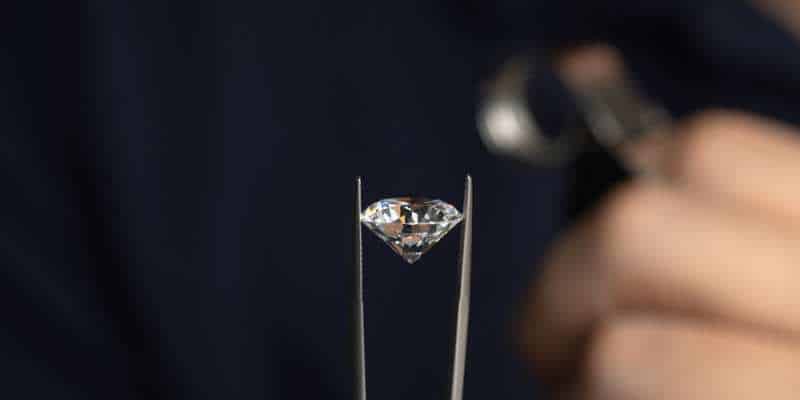
What Determines A Diamond’s Value?
The price of diamonds is influenced by several factors, making these small carbon crystals highly valuable and versatile. It is challenging to pinpoint a single reason for their value. Here are a few factors that contribute to their significance:
- Rarity: Diamonds are rare, and their scarcity contributes to their high value. The limited supply creates a sense of exclusivity and desirability.
- Difficult mining process: Extracting diamonds from the earth involves complex and labor-intensive mining processes. This adds to their overall cost and contributes to their value.
- Durability: Diamonds are known for their exceptional durability, being one of the hardest substances on Earth. Their ability to withstand wear and retain their brilliance over time adds to their value and longevity.
- Cut: The way a diamond is cut plays a crucial role in its visual appeal and brilliance. Well-cut diamonds reflect and refract light in an optimal manner, enhancing their overall value.
- Clarity: The presence of internal or external flaws, known as inclusions and blemishes, respectively, affects a diamond’s clarity. Diamonds with fewer imperfections are considered more valuable.
- Color: While most diamonds are colorless, the presence of natural colors can significantly impact their value. The rarity and intensity of vividly colored diamonds, such as blue, pink, or yellow, contribute to their higher prices.
All these factors collectively determine the price of a diamond and influence its demand. Consequently, these factors also contribute to assessing the investment potential of diamonds.
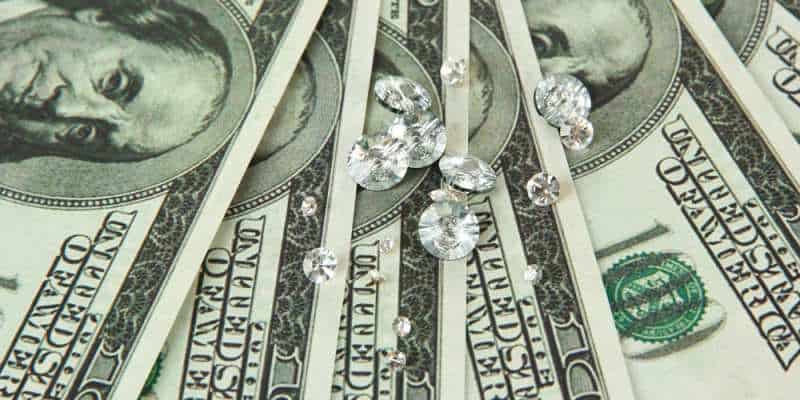
Are Diamonds A Good Investment?
For many years, pure yellow gold was considered the top choice for investment. However, investment trends have evolved, and gold is no longer the ultimate investment option.
So, what about diamonds? They are expensive, rare, and incredibly beautiful. They certainly seem like a promising investment, but is that really the case?
The truth is, it depends on who you ask. Experts hold varying opinions on this matter, just as they do on many other topics. Therefore, we will present you with both sides of the argument, allowing you to make an informed decision.
Weighing the Pros and Cons
One thing most experts agree on is the importance of considering the pros and cons before investing in diamonds. Let’s explore some key points:
- Size: Diamonds offer an advantage in terms of size. They are significantly smaller than gold bullion while being worth two to three times more for the same size. This means diamonds save space while holding greater value than bulky gold bullion.
- Storability: When investing in physical assets, storage is a crucial consideration. Diamonds can be purchased in small units that hold substantial value. They can be conveniently stored in a small safe or even worn as jewelry, which is a unique characteristic not many assets possess. Gold bullion lacks this versatility.
- Durability: Diamonds hold the advantage of being the hardest material on Earth. They have minimal risk of wear or damage when properly cared for. Gold, on the other hand, carries a certain degree of risk in this regard.
- Inflation: Like other physical assets such as silver, gold, and real estate, diamonds are considered inflation-proof. This provides assurance against the impact of inflation.
- Price Transparency: Diamond market price transparency is not as strong as in the gold market. The gold market benefits from a relatively uniform popular price index that is easily accessible. In contrast, diamonds do not have a universal price per gram. The price of a diamond depends on supply, demand, and individual evaluation, often involving some subjectivity.
- The Wait: Investments typically require patience before returns are realized. Diamonds fall into the category of investments that demand patience. They are not suitable for investors seeking quick returns. However, if you are willing to wait and have other investments that yield interim profits, diamonds might be a suitable choice.
- Tradability: It is worth noting that diamonds may not have broad market demand, impacting their liquidity as an investment. Fewer buyers are interested in purchasing diamonds, affecting their tradability. Consequently, companies willing to buy diamonds may offer lower prices than what was initially paid, diminishing their value.
Ultimately, the decision to invest in diamonds depends on your individual circumstances, risk tolerance, and investment goals. Considering the pros and cons can guide you in making an informed choice.
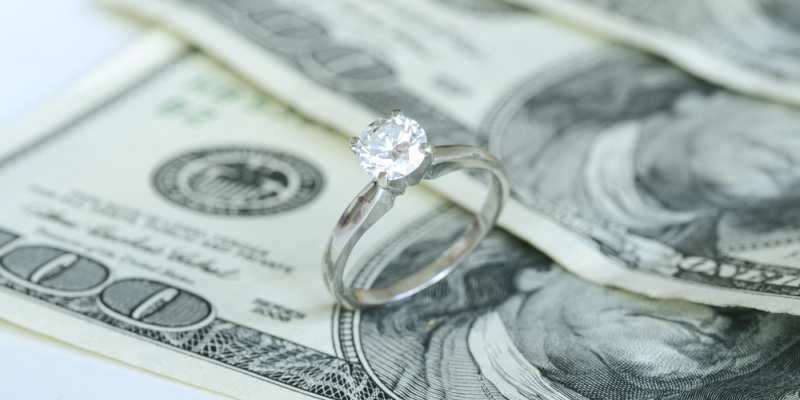
Tips For Investing In Diamonds
If you decide to invest in diamonds, it’s crucial to approach it with caution and make informed choices. Here are some tips to guide you along the way:
- Manage Your Expectations: Diamonds are not a shortcut to quick wealth. Be prepared for the market value to fluctuate and understand that their appreciation tends to be slow over time. Patience is key, and it’s important not to rely solely on diamonds for significant profits.
- Diversify Your Investments: Since diamonds have a slow growth rate, it’s advisable to diversify your investment portfolio. Allocate your resources to other investments that offer faster returns. This way, you can have financial security while waiting for diamonds to potentially appreciate.
- Buy Certified Diamonds: When purchasing diamonds, prioritize those that have been independently certified. While many shops provide certificates, independent certification adds credibility and ease of resale. Keep the certificate in a secure location separate from the diamonds themselves.
- Consider Diamond Shape: Certain diamond shapes are more popular and have a broader market appeal. Round brilliant diamonds are the most sought after, so investing in them is generally a good choice. Other shapes like the Princess cut also have popularity but may not be as widely preferred as round diamonds.
- Avoid Lab-Grown Diamonds: Lab-grown diamonds are artificially created in controlled laboratory conditions and have the same chemical composition as natural diamonds. However, their manufacturing process and relatively new presence in the market can impact their price and stability. Natural diamonds derive much of their appeal from their rarity and natural formation. Lab-grown diamonds can be mass-produced at a lower cost, making them more accessible to a broader consumer market. Additionally, their resale value and long-term trajectory are uncertain.
By following these tips, you can navigate the diamond investment landscape with greater awareness and make decisions that align with your goals and risk tolerance.
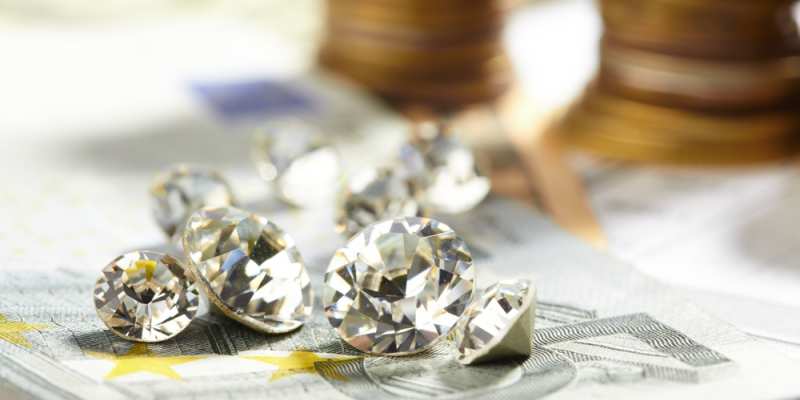
Conclusion
Are diamonds a wise investment? That’s the question on many people’s minds. We’ve covered the topic extensively in this article, and here’s a recap of what we discussed:
Determining the quality of an investment involves considering liquidity, risk assessment, and investment return, regardless of the asset, including diamonds.
Diamonds derive their value from factors like rarity, cut, color, and the mining process, which ultimately affect their resale value.
Determining whether diamonds make a good investment requires careful consideration of various factors, making it a nuanced decision. Weighing the pros and cons is essential.
In terms of size, storability, durability, and protection against inflation, diamonds have advantages over other assets like gold. However, aspects such as price transparency, return time, and tradability can be challenging and may require the expertise of an experienced investor.
We also provided several tips for those considering diamond investment: manage your expectations, diversify your investment portfolio, purchase independently certified diamonds, focus on in-demand cuts like round brilliants, and exercise caution with lab-grown diamonds.
Armed with this essential information, you can now make an informed decision. Whatever path you choose, we wish you successful investing!


